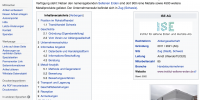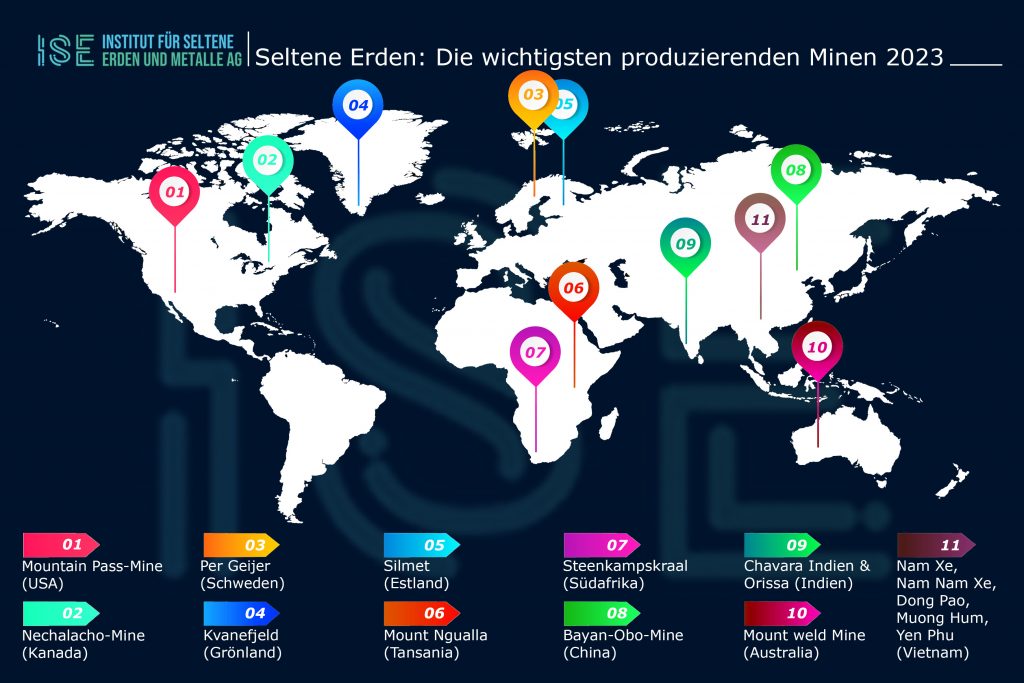The Institute of Rare Earths and Metals visits Lyna's new plant LAMP for the Separation of Rare Earths in Malaysia
 04.06.2012 Malaysia, Dusseldorf - At the invitation of the Academy of Sciences in Malaysia, Mr. Alastair Neil, member of the Institute for Rare Earths (www.institut-seltene-erden.org) in Germany visited the Lynas plant in Kuantan and met Mr. Christoph Wilhelm vom Karlsruhe Institute of Technology, Prof. Yan a rare earth separation specialist from Beijing University and Jack Lifton from Technology Metals Research USA. First of all, an open exchange was held in a panel discussion with the topic "Environmentally friendly opportunities in the rare earth industry" in a top-class cast of specialists from this field. The talks were very encouraging and it was obvious from the question that this is a highly emotional issue in Malaysia.
04.06.2012 Malaysia, Dusseldorf - At the invitation of the Academy of Sciences in Malaysia, Mr. Alastair Neil, member of the Institute for Rare Earths (www.institut-seltene-erden.org) in Germany visited the Lynas plant in Kuantan and met Mr. Christoph Wilhelm vom Karlsruhe Institute of Technology, Prof. Yan a rare earth separation specialist from Beijing University and Jack Lifton from Technology Metals Research USA. First of all, an open exchange was held in a panel discussion with the topic "Environmentally friendly opportunities in the rare earth industry" in a top-class cast of specialists from this field. The talks were very encouraging and it was obvious from the question that this is a highly emotional issue in Malaysia.
After a presentation by Lynas and the subsequent tour of the Lamp (Lyna's Advanced Materials Plant) plant, it became clear that Lynas had invested a lot of time, effort and money to understand and respond to the concerns of all involved. The plant itself, environmental safety and management are, according to Mr. Neill, the best and most modern thing he has ever seen in a Rare Earth Refinery. The exhaust gas cleaners and filters have redundant safety functions and according to the German specialists for radiation monitoring everything is up to date. With the installed security systems Lynas is continuously informed about the emissions of the LAMP. The unanimous opinion of the panel of experts considers a possible leakage of radioactive radiation almost impossible.
Lynas has assembled an impressive team of specialists, consisting of chemists and engineers who operate this state-of-the-art facility. Since most mistakes are due to human error, this is a crucial factor that shows that Lynas spares no expense to ensure safety. Overall, it gave the impression that safety was the top priority in Lynas' work.
With the help of engineers who have experience with rare earth plants, as well as the support of Rhodia, a French producer of specialty chemicals, created by the merger of Rhone-Poulenc and Hoechst (1998), it can be expected that the launch this system will start with smaller delays.
Malaysia is on the right track to become a shining center for rare earths. This has also been confirmed by a subsequent visit by the UMP (University Malaysia Pahang). The university's extremely well-equipped laboratory, paired with program support from Beijing University and KIT in Germany, shows that Malaysia is at the forefront of high-tech research and development in the field of rare earth processing. With consistent adherence to all safety and quality requirements, this course could turn Malaysia into a high-traffic high-tech country. Many rare earth companies are looking for a base outside of China to convert their crude products into rare earth oxides.
It is hoped that Lynas will succeed in gaining the confidence of the people of Malaysia. It must be remembered that this is a chemical factory and not a nuclear power plant. The risk of a radioactive disaster is not comparable to the operation of a reactor. The chosen path of Lyna to seek dialogue with the population seems to be the right approach. But the general skepticism of the population compared to the new high-tech plant is still very large.
Alastair Neil, on behalf of the Institute of Rare Earths and Metals, thanks the Academy of Sciences in Kuala Lumpur for the invitation and opportunity to hear and see the different views on Lyna's plant in Kuantan Malaysia and the business climate.
The Institute of Rare Earths and Metals eV
The Institute for Rare Earths sees itself as a network of contacts bringing together mining companies, licensing agencies, exploration companies, investors, end users and government agencies. The background to this goal is to counteract the ever increasing scarcity of these elements through various export restrictions.
The world economy depends on the oil. This has become clear at the latest in the oil crises 1973 and 1979. As awareness of the scarcity of this resource increases, so does its price. However, largely unnoticed, we have long since fallen into a second dependency - of the so-called rare earths: these metals are difficult to obtain in 17 are needed in numerous high-tech areas, from cell phones and LED TVs over modern medicine to electrical and electronic Hybrid engines, which should solve the mobility of the oil. Rare earths are among the most valuable raw materials in the world today.
Largest supplier of indispensable elements is by far China. And like the Arab states in oil, the People's Republic thus has the market in hand. In the past, China has already drastically reduced its export quotas for rare earths, and further reductions have been announced for the near future. One of the reasons for this monopoly position is that China has so far not paid attention to environmental compatibility during dismantling. Air, soil and water were ruthlessly polluted.
In order to break this dependency on Chinese exports and promote clean mining, the Institute for Rare Earths was founded. We see ourselves as a counseling center and network platform and offer not only comprehensive information about rare earths but also professional research analyzes on occurrences, dismantling projects and stock investments. The aim of the institute is to bring together suppliers, buyers and investors in order to open up the economically critical resource rare earths outside of China. www.institut-seltene-erden.org





